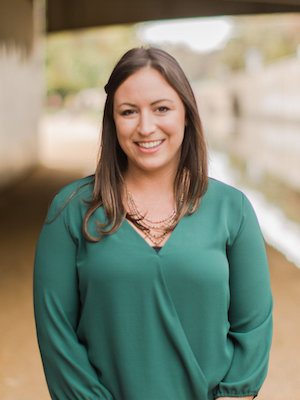
When I first started learning about marketing one of the basic principals that all of the materials stressed was to figure out your target market (i.e., ideal client, target audience, niche, etc.).
As a professional organizer, I initially thought this meant figuring out what kind of stuff I wanted to organize (e.g., closets, kitchens, offices, etc.) or who I wanted to organize for (e.g., moms, business owners, lawyers, etc.). In typical newbie fashion I thought, “I don’t care about the what or who I just want the jobs!”
Apparently, this is a mistake a lot of new entrepreneurs make, and of course it’s hard when you don’t have the experience to know what you will like (and not like) doing.
Honestly, how is one to know that you will hate working with the uber relaxed surfer bra types, but thrive when working with uptight control freaks?! It takes a while to really hone in on these specifics, but after just a few client experiences you can start to piece it together.
Eventually you will experience a total aha! moment and get really specific about the people you want to work with (which is ironically when clients start flooding in).
Here’s an inside look at how I figured out who my ideal organizing clients were:
1. I made a list.
I made a list of all my clients (e.g. or the most recent 5-10, if you have been in business for a while) .
2. I ‘reviewed’ my clients.
Then I wrote down all of the things I liked (and didn’t like) about working with each client. I got really specific here. I considered: Did she know exactly what she wanted? Did he give specific instructions? Or she didn’t give a lot of guidance and it was up to me to take the creative reigns.
When I did this quick exercise I noticed a few overarching themes about the clients I had chosen to work with. For instance, my favorite clients were:
-
the ones who didn’t want to be extremely hands on in the process, and just shared general guidance with a ‘trust the expert’ mindset. They weren’t going to stand over my shoulder and wonder, “How a professional would do it?”
-
not hugely sentimental. My best clients know what they want (i.e., a clutter free and organized space) and we didn’t have to take ten minutes and discuss the history of every single trinket and then debate whether to store it or dump it.
-
aware of the value of my services and willing to pay. They didn’t try to haggle on price or freak out when we reviewed my hourly rate. (This is not to say that I only work with high end clients who have lots of disposable income. There are plenty of clients who are on a budget, but they understand the value and always tell me it was “well worth every penny.”)
Even if you haven’t booked your first client yet or sold a single product, you can still start thinking about the kind of people you want to work and develop buyer personas. Keeping this in mind will make the process that much easier when you are ready to go after business. (Hint: you just go to places that these people already are.)
This article has been edited and condensed.
Carly Poppalardo is the founder and organizing guru behind POP Organizing, a Washington DC-based professional organizing company that specialized in helping clients simplify their lives, homes and offices so they can live a more fulfilled and purposeful life. Connect with @poporganizing on Twitter.
© YFS Magazine. All Rights Reserved. Copying prohibited. All material is protected by U.S. and international copyright laws. Unauthorized reproduction or distribution of this material is prohibited. Sharing of this material under Attribution-NonCommercial-NoDerivatives 4.0 International terms, listed here, is permitted.













